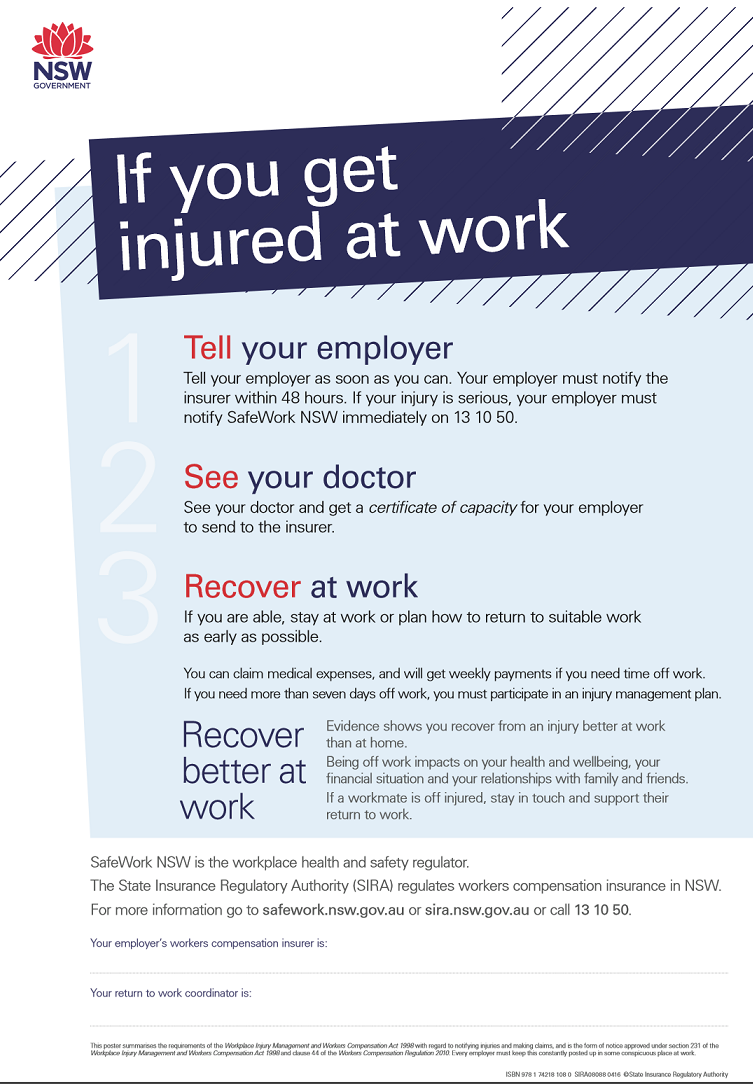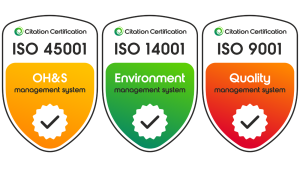One of my workers is injured…What do I do?
When one of your workers get injured at work, there are a number of steps that need to be carried out.
1 – If a worker is injured at your workplace, the business must provide immediate first aid treatment where appropriate, and seek further medical treatment if the injury requires it. Remember that the injured worker has the right to choose the nominated treating doctor. If your business has a preferred medical provider, you can only suggest that they are treated there.
2 – Once first aid or medical treatment is sought, the injury must be recorded in a register of injuries. A description of what the injury was, when it happened, where it happened and how it happened is a basic start. The workers name, address, occupation and contact details is also required. The injury must also be reported to your Workers Compensation insurer within 48 hours of being notified. The worker or an employer representative can make the initial notification online or by telephone.
3 – If the incident that injured the worker is classed as a notifiable incident, an employer representative must notify SafeWork NSW immediately on 131050. A notifiable incident is defined as:
– Death
– Serious injury or illness
– Dangerous incident.
Once the incident has been reported, the area where the incident occurred must not be disturbed until directed by a SafeWork NSW Inspector. This is required as an investigation may be warranted and evidence of the scene may be needed. It is a good rule of thumb to ask the SafeWork NSW representative when reporting the incident if the non-disturbance can be lifted.
4 – Promoting return to work for injured workers is a great way to demonstrate your commitment and also ensure the injured worker that they have your support. Research has demonstrated that workers that return to work on suitable duties, early within their claim, are more likely to fully recover and return to pre-injury duties. A delay in returning to work may be associated with a delayed recovery.
Having your worker return to work in any capacity will also assist your business. These advantages may consist of:
– Demonstrate to your workforce that your business cares about their welfare;
– Reducing the cost of hiring and training replacement staff;
– Retaining the knowledge and experience of the injured worker.
5 – Developing a Return to Work Plan that includes suitable employment that fits within the injured worker restrictions is required prior to the worker returning to work. This Return to Work Plan must be developed in consultation with the employer, the injured worker and the nominated treating doctor. This consultation process will ensure that the identified suitable employment will not increase the risk of further injury, and, ensure the injured worker is in agreeance of what duties they can undertake in the workplace. It is generally a good idea to have the Return to Work Plan developed for the period of time between medical appointments. This will ensure that any updates in the injured workers restrictions are then included in the next Return to Work Plan. This process should see the injured worker’s duties increase until they are fit to return pre-injury duties.
Following the abovementioned steps will assist your business in documenting an injury, reporting the injury to the required authorities and manage the injury until the worker is fit for pre-injury duties.
Finally, you should also display the SafeWork NSW injury poster: If-you-get-injured-at-work-poster-8088
For further advice on Return to Work, visit the SafeWork NSW website. www.safework.nsw.gov.au
For a bit of information on Workers Compensation in NSW see the following video “Creating a Better Workers Compensation System for NSW” (posted in 2015).

